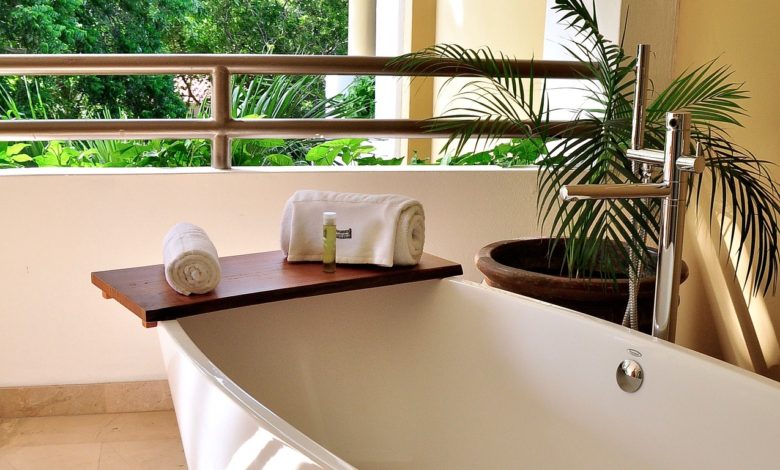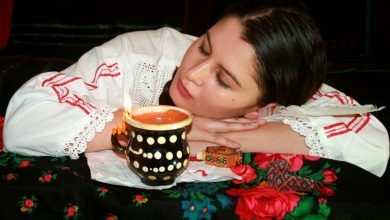What is an Oatmeal (Powder) Bath? What are Its Benefits?

Everyone wants to relax with the pleasure of a warm bath after a long and busy day, and this is something they dream of. Although the benefits of taking a shower in relieving fatigue and stress are known, adding some natural products to bath water maximizes these benefits. Here, oatmeal is one of the natural products that have numerous benefits for the skin. This article contains information on the benefits of taking a bath prepared with oatmeal or oat powder.
What Is Oatmeal Bath?
Oatmeal baths, as the name suggests, are bath therapy with oatmeal added to water. They are prepared with finely ground oat powder or colloidal oatmeal. If there is no store-bought colloidal oatmeal at home, it can also be prepared by grinding oats with the help of a coffee grinder or food processor. Bathing with oatmeal has moisturizing and anti-inflammatory effects on the skin. When oatmeal is applied to the skin, it helps soothe dry, itchy and damaged skin. It also contains beneficial antioxidants that support skin healing and healthy aging.
Health Benefits of Oatmeal Bath
Studies have revealed that oats have been used as a topical treatment for centuries for various skin conditions such as dry skin, rashes and eczema. The benefits of oatmeal bath can be listed as follows.
Soothes the Skin
Oatmeal baths are beneficial for soothing itchy, irritated skin. For those dealing with an inflammatory skin condition, rash, hives, or sunburn, oatmeal has soothing, nourishing and moisturizing properties. It acts as an antioxidant and anti-inflammatory agent, enhancing the healing of the skin from within. Studies also reveal that oatmeal plays a role in protecting the skin against ultraviolet rays. This is why it is sometimes seen as an ingredient in oatmeal cosmetic preparations.
Gently Moisturizes the Skin
Bathing with powdered oatmeal creates a protective barrier in the skin that helps retain moisture and stay moist. In addition to its moisturizing properties, saponins, which have antibacterial and protective effects, act as a barrier on the skin and keep it clean. In a clinical study, the moisturizing effects of colloidal oatmeal were evaluated, and it was found that it has significant benefits for chapped, damaged and dry skin.
Reduces Inflammation
Research shows that oatmeal has antioxidant and anti-inflammatory properties, and its application is effective on many dermatological inflammatory diseases, including atopic dermatitis itching, viral infections, and psoriasis. Its anti-inflammatory effects are the reason why oatmeal baths for hives are so effective. It can help reduce swelling, itching, and irritation. An oatmeal bath can also help reduce sunburn, insect bites, chickenpox, poison ivy, and diaper rash. Used correctly, it is also beneficial for children.
Contains Antioxidants
Scientists have determined that the avenanthramides found in whole oat grains prevent inflammation and soothe the skin. Avenanthramides are a group of phenolic alkaloids that act as powerful antioxidants. These compounds are useful in early signs of aging and skin damage for their ability to fight free radical damage. It has itching and even potential anti-tumor effects.
Protects the Skin
A randomized controlled study published in the Journal of Drugs in Dermatology found that colloidal oatmeal has skin barrier-enhancing activity. When oatmeal lotion was used topically, it showed significant clinical improvements in skin dryness, moisturizing and barrier. Colloidal oatmeal also provided a pH buffer to the skin and accelerated the healing of barrier damage. This means it can protect the skin from dirt, bacteria and environmental factors that cause irritation or damage.
How to Make an Oatmeal Bath?
To make your own oatmeal bath, it is necessary to purchase colloidal oatmeal or grind a cup of unflavored quick or instant oats. The person can grind the oats to a fine powder using a coffee grinder, blender, or food processor. Things to do to prepare the soothing oatmeal bath can be listed as follows:
- The tub is filled with warm water.
- A glass of fine powdered oats is added.
- Let the oats brew for a minute. Oat powder should be dissolved in water and they should look like milk.
- It is entered into the bath prepared at the end.
- The skin should be rinsed after standing in the bathtub as much as desired. Oatmeal should drain easily when properly ground, but it may then be necessary to wash the bath to remove residue.
- The skin can then be moisturized with this homemade lotion containing coconut oil, incense and lavender.
About half a cup of unsweetened powdered oats should be used for babies or young children. If there are concerns about the cleanliness of the tub, oatmeal powder can also be placed in a sachet and put into the tub.
Risks and Side Effects Related to Bath
Colloidal oatmeal baths are generally safe and well tolerated. When the safety of colloidal oatmeal in personal care products was evaluated by researchers in France, oatmeal was found to have very low irritant potential and very low allergenic sensitization potential. No allergies have been reported on more than 440,000 products sold by consumers over a three-year period. If you feel redness, burning or irritation during the oatmeal bath, you should quit the bath and rinse the skin. Do not exceed 15 minutes while taking a colloidal oatmeal bath because oats can have a drying effect. In addition, care should be taken not to have enough hot water to cause irritation and damage to the skin.
As a result, a colloidal oatmeal bath is made with powdered oats that become a moisturizing and soothing substance, like milk in warm bath water. Oatmeal baths have been popular for centuries for their ability to soothe damaged, dry or itchy skin. Oatmeal helps relieve inflammation and discomfort from hives insect bites and diaper rash. It even works well to treat a poison ivy. To enjoy the many benefits of an oatmeal bath, one should add a cup of finely ground oatmeal to warm bath water and stay in a taboo bath for about 15 minutes.





